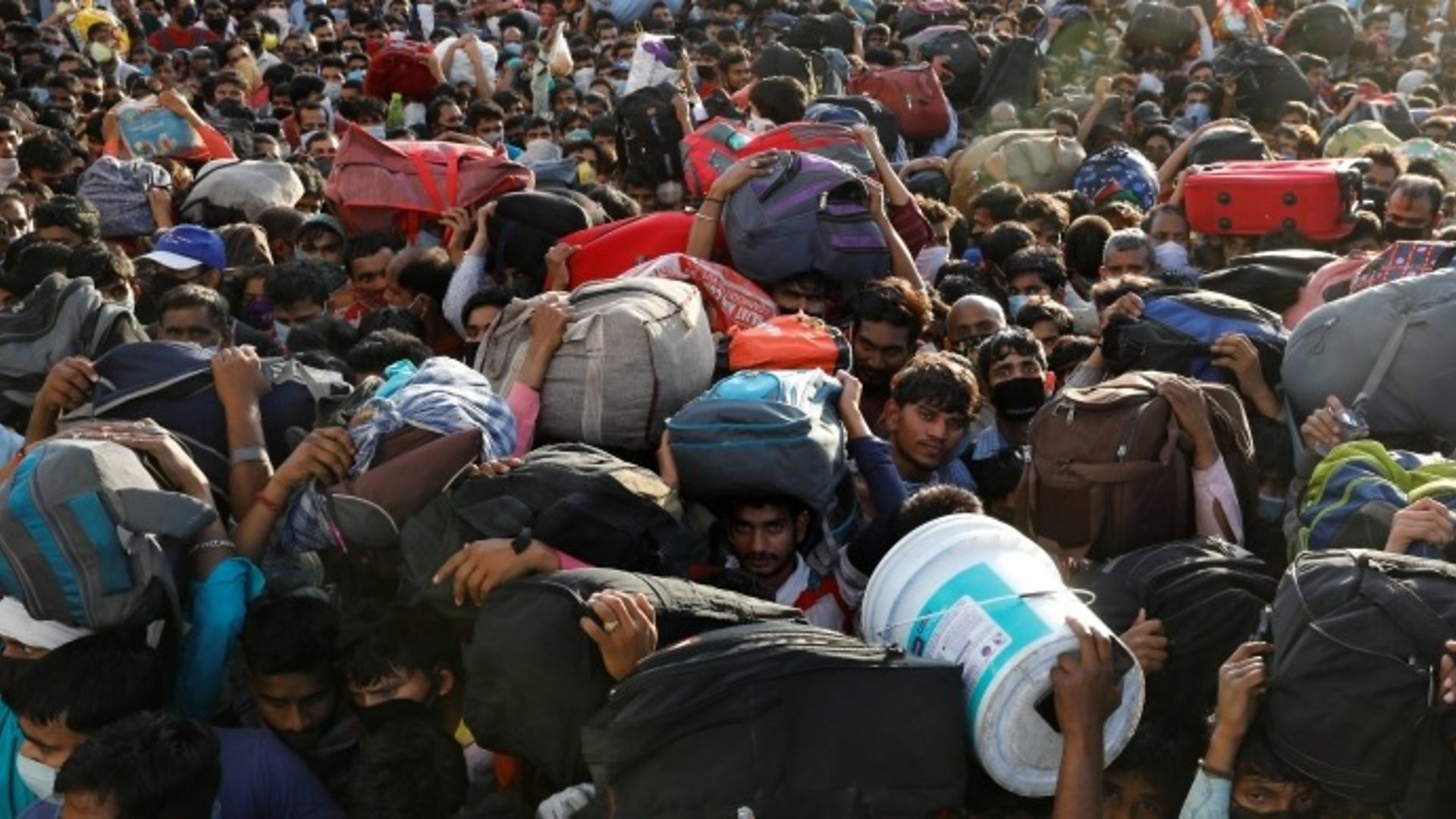
Migrants in India fill the dingy lanes of most large cities in India. They are the “outsiders” found in clusters in different states within India. They learn that the name of the game is to survive. So they quickly learn to imbibe the culture of the state they migrate to to start a new life away from their homes. They make attempts to forget their past and also tenaciously try to hold on to the fond memories of their parents and siblings, like a shrinking balloon that wrinkles and crumbles over time, lost among the milieu.
Most migrants flee their homes for a better life outside.
The majority of minor girls are sold into brothels in the trafficking industry. These innocent girls are sold to the highest bidder. Most often, these girls are bought into the flesh trade by a relative or a friendly neighbour who promises the family a good income for the family. These girls are also from our neighbouring countries, like, Nepal, and Bangladesh. We can also find such practices in Indian states like West Bengal and Darjeeling, where girls are sold into bigger cities to the madam who slowly initiates her into the flesh trade.
The migrant girls most often can’t speak the local dialect. So they are at a loss where the pricing is negotiated and have zero knowledge of how to even register a complaint with the authorities.
If the girl dares to protest, she is mercilessly beaten by the owner, who has paid to buy her. These girls are also cheated of their money and left unattended if they catch incurable diseases.
Kolkata has an influx of migrant workers from Punjab, Bihar, Assam, the North Eastern States of India, and Bangladesh. Most of them have risked their lives to migrate in search of a better way of life.
Out of West Bengal’s 23 districts, 10 share a border with Bangladesh. The border lines are made of barbed wire that separates the countries. The migration from Bangladesh into India happens when the border gates are opened. Many smuggle the girls to be sold into India.
Many women have been married in India, whereas the family still lives in Bangladesh. These women wait for the day, once a year to meet their siblings or parents. They share their emotions, fruits, and clothes as gifts across the barbed wire with a long, drawn stick that they reach out across the wires.
Talking to Zarina, 24, who left her home at the age of 11 when her mother died, she said, “My family was poor. I am the eldest among my siblings. My father was not perturbed when a neighbour offered to take me to Shillong to work as a domestic help in someone’s home. I went along with him from Assam to Shillong. The lady of the house made me toil like a donkey. I was asked to cook Maggi for children in the home but they never offered me anything.”
Zarina’s eyes filled up with tears as she continued, “I miss my mother, but my father is totally disinterested in my well-being. I have got the news that my younger sister and her boyfriend died in the floods of Assam while crossing the river, but I think she got away lucky. No man is willing to marry me, and the road back home is also shut.”
Like Zarina from Assam, many Bangladeshi girls are also smuggled every day to work in India. The Radcliffe line was drawn between West Pakistan (now Pakistan) and India on the western side and between India and East Pakistan (now Bangladesh) on the eastern side of the subcontinent. The length of the Radcliffe Line is 3223 kilometers. It was established in August 1947, but there are maybe double or triple the number of people who are lost in cities in India, crossing the mark of the estimated numbers as per the records.
According to the last census report, there are four crore migrant workers in India.
Migration isn’t a story of glory. It is a battle of loss and longing, found among the migrants who get together in groups, trying to find familiarity in the unfamiliar surroundings around them.